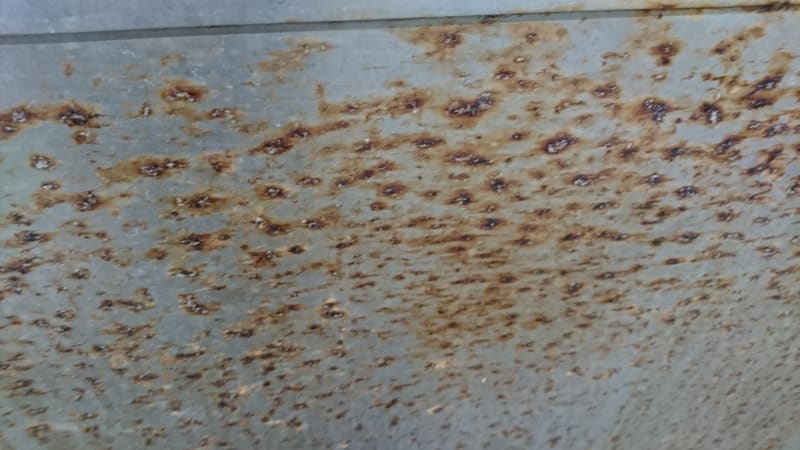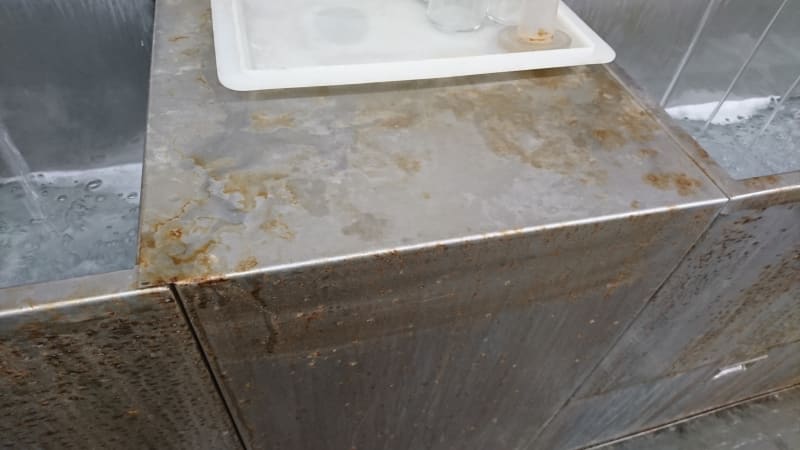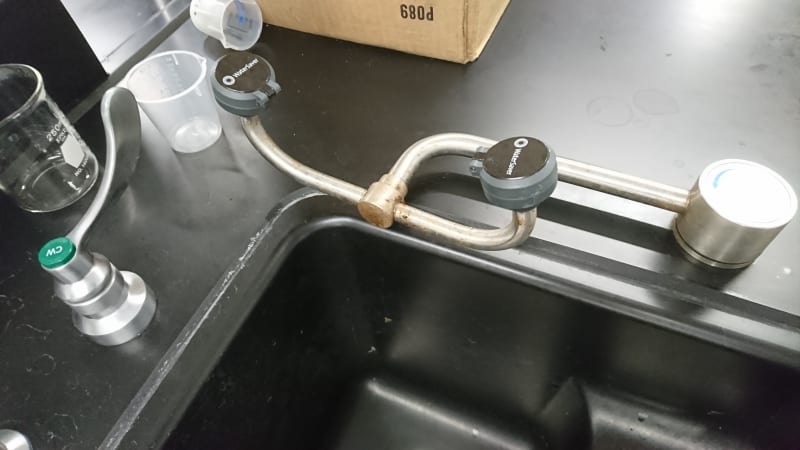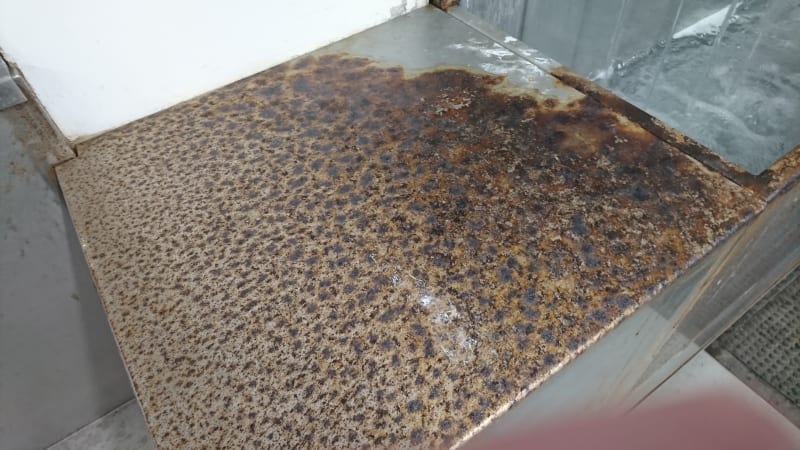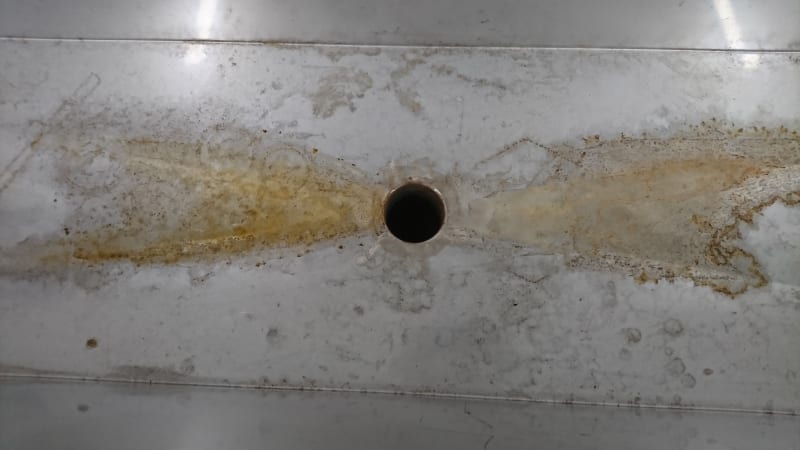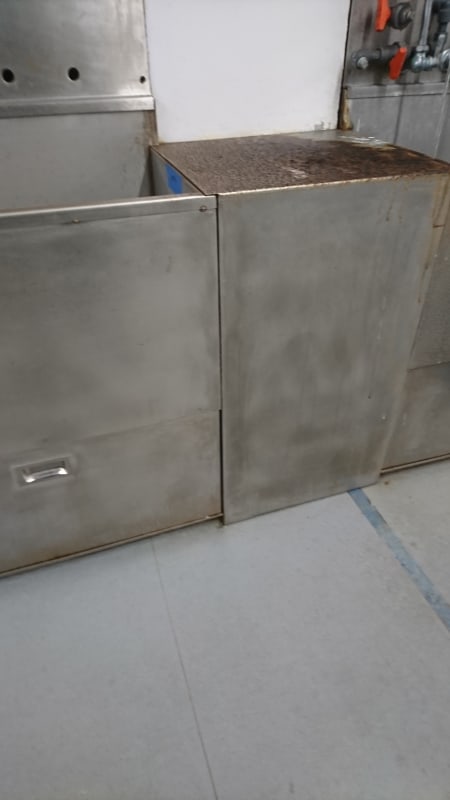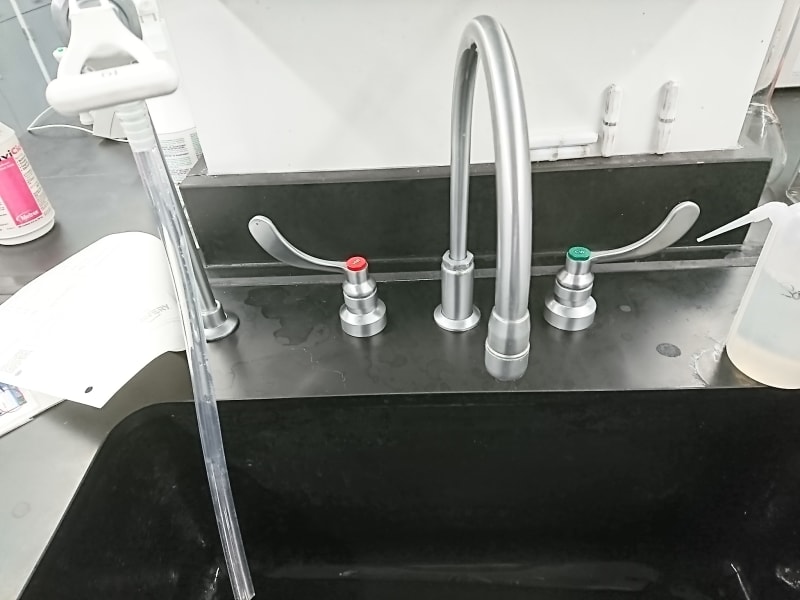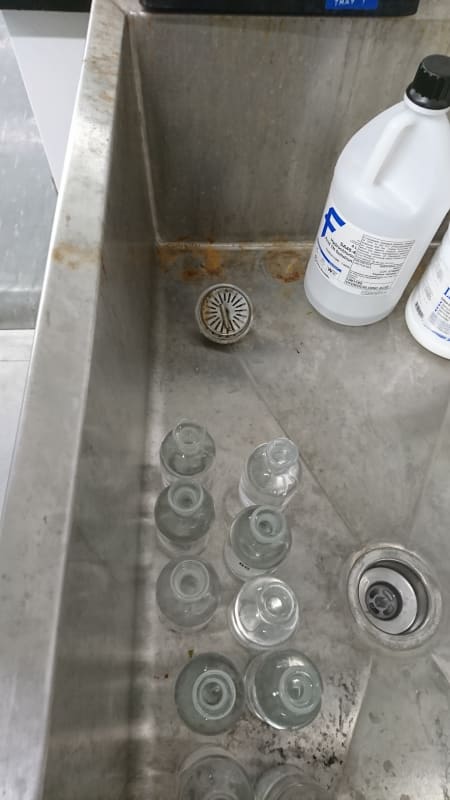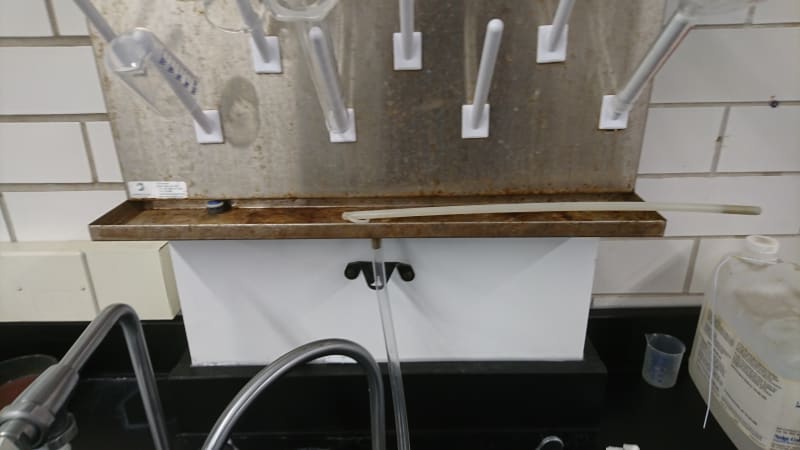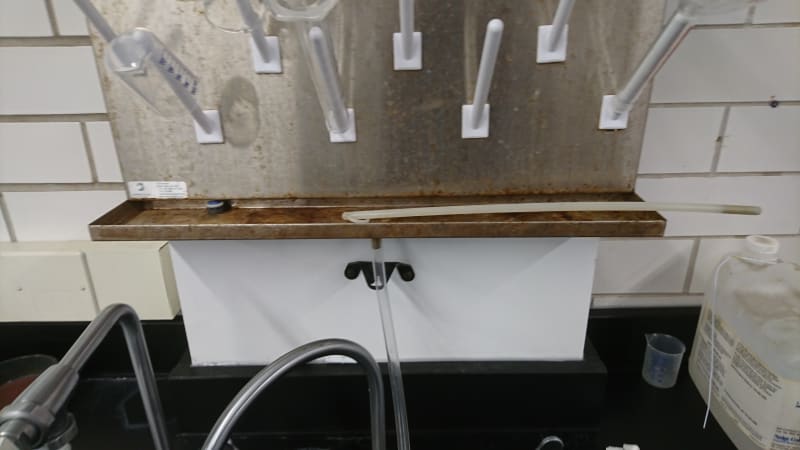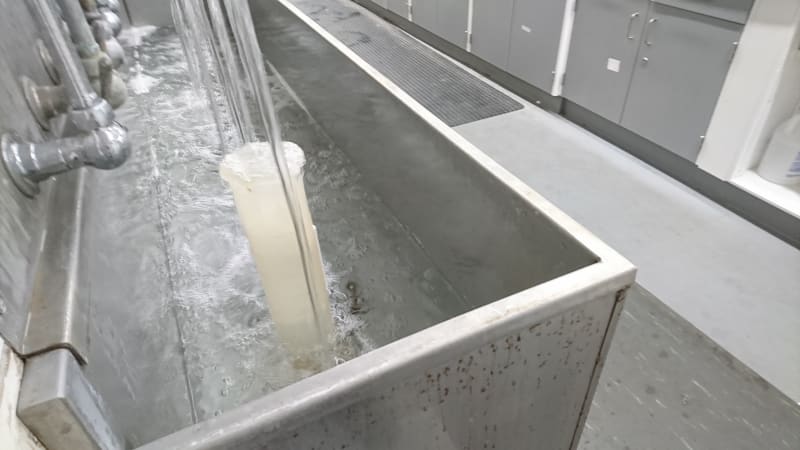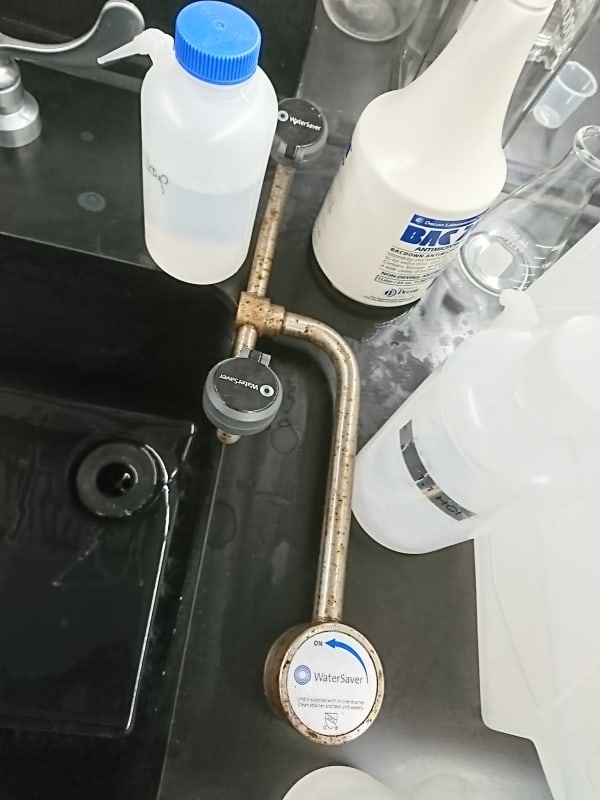Does anyone have an explanation for this corrosion?
This application is a remodel of a water treatment laboratory. The equipment is all new. The trough sampling sinks are made from Gauge 316L-2B stainless steel. The other items like the drawer pulls and safety eyewash are 316 stainless steel.
The trough sinks are used for water quality control and the water runs continuously. The trough sinks have the worst corrosion. As you move farther away in the room, the corrosion on the other fixtures lessems.
October 2020, photos were taken of new rusting stainless-steel products in the Control Lab. New stainless-steel eyewashes, new stainless-steel tub sink, and new stainless-steel cabinet handles were all showing significant signs of rust.
March 8th – 10th, 2021 the new stainless steel trough sinks were installed and were not cleaned or polished at that time. Within a week, these items began showing signs of
rusting.
On April 5th, 2021, the new stainless steel trough sinks were cleaned and polished along with other existing stainless-steel products. Within a week, they began showing signs of rusting again.
On May 27th, 2021, Owner polished the new stainless-steel trough sinks. Within a week, they began showing signs of rusting again and photos of the current condition of the new stainless steel trough sinks are included.
This application is a remodel of a water treatment laboratory. The equipment is all new. The trough sampling sinks are made from Gauge 316L-2B stainless steel. The other items like the drawer pulls and safety eyewash are 316 stainless steel.
The trough sinks are used for water quality control and the water runs continuously. The trough sinks have the worst corrosion. As you move farther away in the room, the corrosion on the other fixtures lessems.
October 2020, photos were taken of new rusting stainless-steel products in the Control Lab. New stainless-steel eyewashes, new stainless-steel tub sink, and new stainless-steel cabinet handles were all showing significant signs of rust.
March 8th – 10th, 2021 the new stainless steel trough sinks were installed and were not cleaned or polished at that time. Within a week, these items began showing signs of
rusting.
On April 5th, 2021, the new stainless steel trough sinks were cleaned and polished along with other existing stainless-steel products. Within a week, they began showing signs of rusting again.
On May 27th, 2021, Owner polished the new stainless-steel trough sinks. Within a week, they began showing signs of rusting again and photos of the current condition of the new stainless steel trough sinks are included.

